Stephanie Faris's Blog, page 49
April 13, 2015
K is for Kicks
This month I'm participating in the A to Z Challenge. My theme is the 80s. Today's letter is:

While the word "kicks" has long been a nickname for shoes, in the 80s it was used for athletic shoes. And in the 80s, we rocked the athletic shoe. There were colorful high tops.
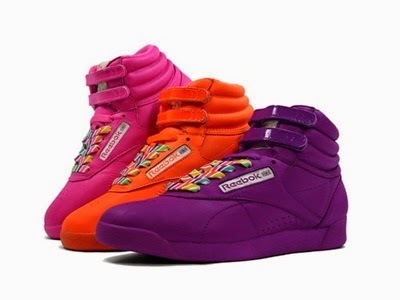
And colorful canvas shoes.

And the checkered canvas shoes pictured on the cover of the Fast Times at Ridgemont High soundtrack.
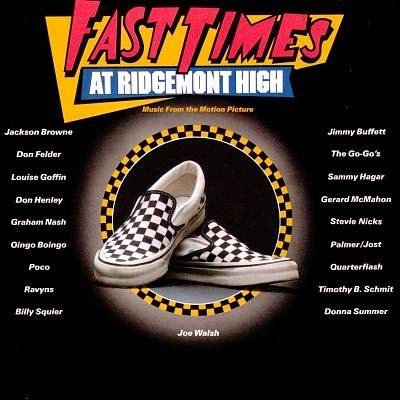
But we had some other cool shoes, as well. I remember having jelly shoes. I think these have been back in style at least once since the 80s.
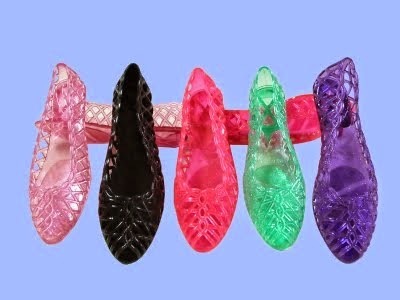
There were also these cool suede ankle boots that I liked so much, I bought another pair when they came back in style in the 00s.
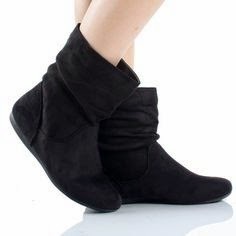
One of my favorite pairs of shoes was my jazz shoes. They were comfortable and went with the cool patterned pants that were so popular in the mid-80s. They had to be polished constantly, though...which may be why they haven't come back in style yet.
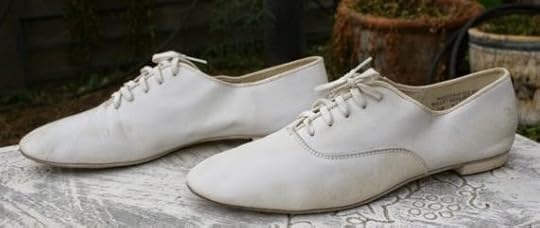
What's the best pair of "kicks" you've ever owned?

While the word "kicks" has long been a nickname for shoes, in the 80s it was used for athletic shoes. And in the 80s, we rocked the athletic shoe. There were colorful high tops.

And colorful canvas shoes.

And the checkered canvas shoes pictured on the cover of the Fast Times at Ridgemont High soundtrack.

But we had some other cool shoes, as well. I remember having jelly shoes. I think these have been back in style at least once since the 80s.

There were also these cool suede ankle boots that I liked so much, I bought another pair when they came back in style in the 00s.

One of my favorite pairs of shoes was my jazz shoes. They were comfortable and went with the cool patterned pants that were so popular in the mid-80s. They had to be polished constantly, though...which may be why they haven't come back in style yet.

What's the best pair of "kicks" you've ever owned?
Published on April 13, 2015 03:00
April 11, 2015
J is for John Hughes
This month I'm participating in the A to Z Challenge. My theme is the 80s. Today's letter is:

A few movies have become icons of the 80s. Films like...
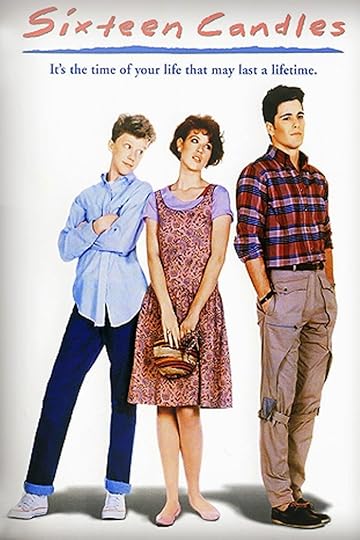
And...
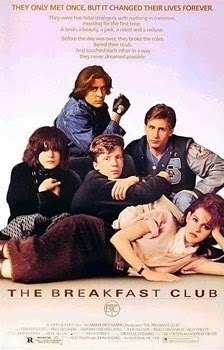
And...
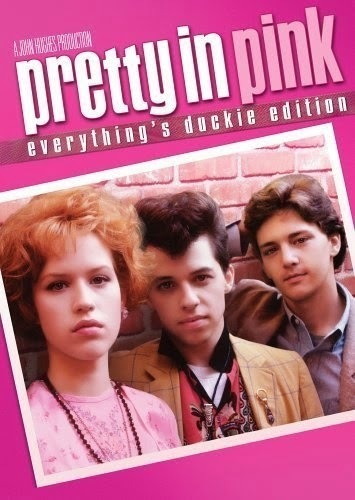
And...
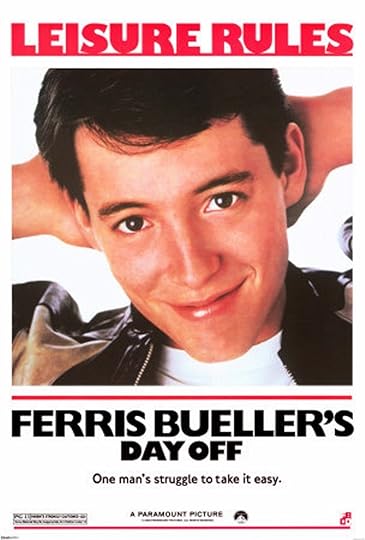
These movies have one man in common. This man...
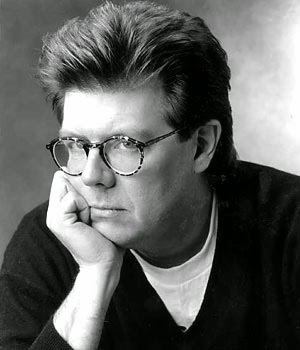
...wrote (and, in some cases, directed/produced) all of them. In fact, John Hughes is behind almost every great 80s movie there is. National Lampoon's Vacation, Weird Science, Mr. Mom... The list goes on.
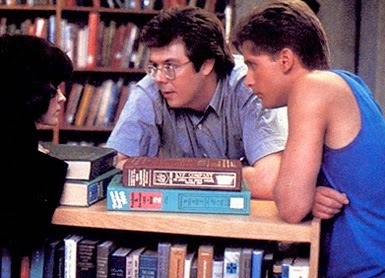
Hughes began his career selling jokes to comedians like Rodney Dangerfield and Joan Rivers. While working as an advertising copywriter in Chicago, he began hanging out at the National Lampoon magazine offices. He wrote a story called Vacation '58, which landed him a writing position at the magazine. Vacation '58 would later become the basis for this movie:
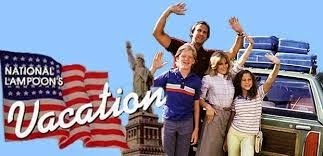
And the rest is history.
Sadly, Hughes died of a heart attack in 2009. But his films will live on for generations.
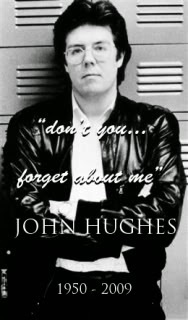
I leave you with this trailer recut of Ferris Bueller's Day Off that turns the movie into a tearjerker. There are also recuts that turn Pretty in Pink and Home Alone into horror movies.

A few movies have become icons of the 80s. Films like...

And...

And...

And...

These movies have one man in common. This man...

...wrote (and, in some cases, directed/produced) all of them. In fact, John Hughes is behind almost every great 80s movie there is. National Lampoon's Vacation, Weird Science, Mr. Mom... The list goes on.

Hughes began his career selling jokes to comedians like Rodney Dangerfield and Joan Rivers. While working as an advertising copywriter in Chicago, he began hanging out at the National Lampoon magazine offices. He wrote a story called Vacation '58, which landed him a writing position at the magazine. Vacation '58 would later become the basis for this movie:

And the rest is history.
Sadly, Hughes died of a heart attack in 2009. But his films will live on for generations.

I leave you with this trailer recut of Ferris Bueller's Day Off that turns the movie into a tearjerker. There are also recuts that turn Pretty in Pink and Home Alone into horror movies.
Published on April 11, 2015 03:00
April 10, 2015
I is for IBM
This month I'm participating in the A to Z Challenge. My theme is the 80s. Today's letter is:

In the 80s, something happened that would change humanity forever. On August 12, 1981, IBM debuted the first ever personal computer, the 5150:
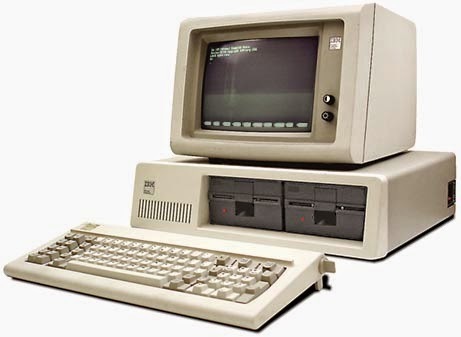
At first PCs were mostly for schools and turbo-geeks. The turbo-geeks used them for very early versions of video games.
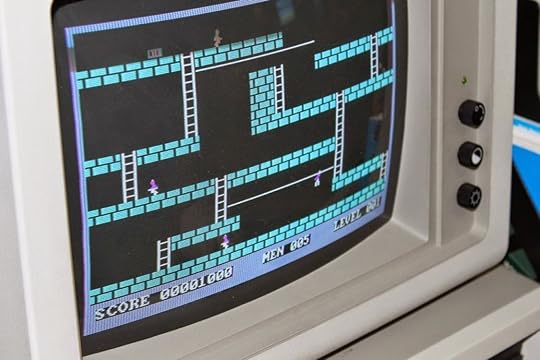
Then Steve Jobs came along and decided the personal computing experience had to go beyond geeks. It had to be so sleek, everyone would want to use it. In 1983, the world's first user-friendly computer, the Lisa (also the name of the daughter he initially denied was his), was born.
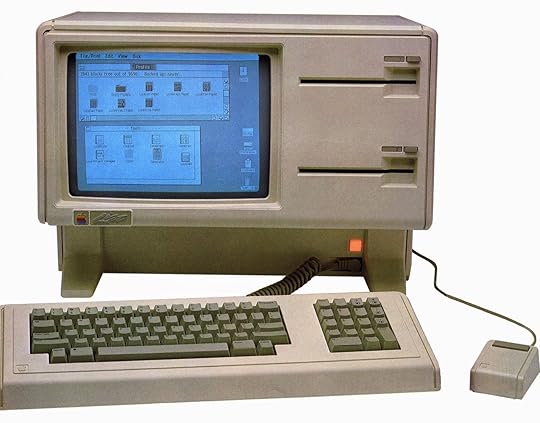
Something about that reminds me of the first version of Windows I saw--Windows 3.1. In 1983, though, Apple seemed to be winning the war to make the personal computer seem cool. Here's a 1983 Lisa ad featuring a pre-fame Kevin Costner.
Of course, I have to mention the most famous Apple commercial ever, which only aired twice on American television (once during the 1984 Super Bowl). Yet it's the probably one of the best-known commercials of all time.
Let's end the myth that Microsoft ripped off Apple's operating system, though. It's pretty much become understood that they all ripped off Xerox. This was Xerox's Star Workstation, released in 1981. Does this look a little like Apple's Lisa? Windows 3.1?
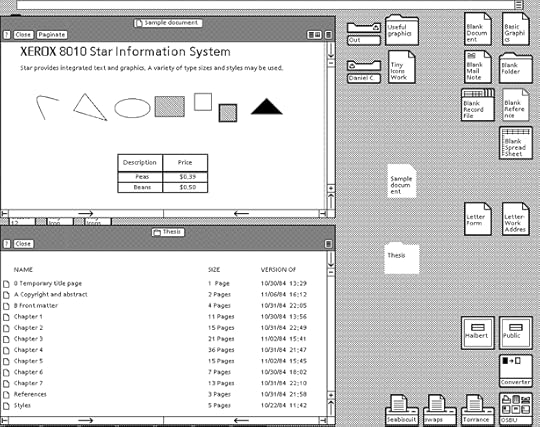
What was the first computer you ever owned?

In the 80s, something happened that would change humanity forever. On August 12, 1981, IBM debuted the first ever personal computer, the 5150:

At first PCs were mostly for schools and turbo-geeks. The turbo-geeks used them for very early versions of video games.

Then Steve Jobs came along and decided the personal computing experience had to go beyond geeks. It had to be so sleek, everyone would want to use it. In 1983, the world's first user-friendly computer, the Lisa (also the name of the daughter he initially denied was his), was born.

Something about that reminds me of the first version of Windows I saw--Windows 3.1. In 1983, though, Apple seemed to be winning the war to make the personal computer seem cool. Here's a 1983 Lisa ad featuring a pre-fame Kevin Costner.
Of course, I have to mention the most famous Apple commercial ever, which only aired twice on American television (once during the 1984 Super Bowl). Yet it's the probably one of the best-known commercials of all time.
Let's end the myth that Microsoft ripped off Apple's operating system, though. It's pretty much become understood that they all ripped off Xerox. This was Xerox's Star Workstation, released in 1981. Does this look a little like Apple's Lisa? Windows 3.1?

What was the first computer you ever owned?
Published on April 10, 2015 03:00
April 9, 2015
H is for Hair Spray
This month I'm participating in the A to Z Challenge. My theme is the 80s. Today's letter is:

By "hair spray," I'm not referring to this Broadway play-turned-bad movie starring John Travolta in drag.
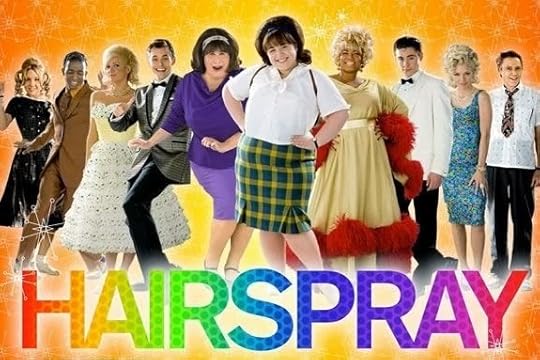
I'm talking about a hair product we used before we knew there were other products you could use that would make your hair look better. Like gel. Or mousse. Or a brush.
I'm talking about hair spray.

In the 80s, hair spray was the one product you used to get your hair to look big.
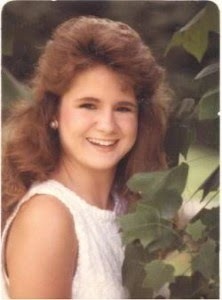 Me in 1987
Me in 1987
You'd first spend serious time with a curling iron, then hose your hair down with this:
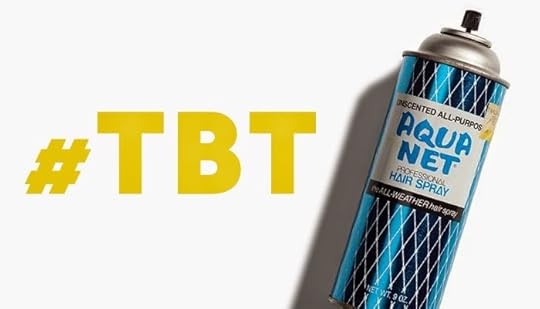
Toward the end of the 80s, we began hearing a lot about what all that aerosol was doing to the ozone layer. As one legislator pointed out, we all gave up Aqua Net because our science teachers told us it was killing the planet. I don't remember that being the reason. I believe we all were inspired to trade our big bangs in for straight hair by shows like this:
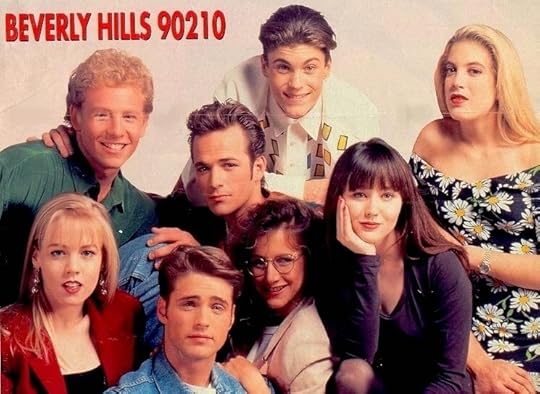
Although we did have to pull out our hair spray again when this hairstyle took over in the mid-90s:
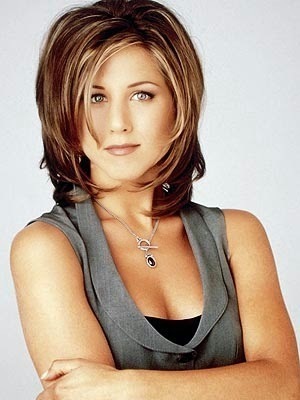
Make fun of the hairstyles in the 50s, 60s, and 80s all you want, but at least women did something with their hair besides brush it. When was the last thing anything but "long and straight" was in for fashionable girls? I think we're in for a hairstyle revolution. Bring back the Aqua Net!
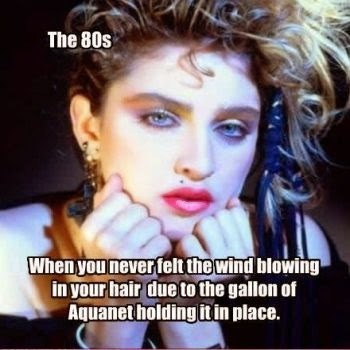

By "hair spray," I'm not referring to this Broadway play-turned-bad movie starring John Travolta in drag.

I'm talking about a hair product we used before we knew there were other products you could use that would make your hair look better. Like gel. Or mousse. Or a brush.
I'm talking about hair spray.

In the 80s, hair spray was the one product you used to get your hair to look big.
 Me in 1987
Me in 1987You'd first spend serious time with a curling iron, then hose your hair down with this:

Toward the end of the 80s, we began hearing a lot about what all that aerosol was doing to the ozone layer. As one legislator pointed out, we all gave up Aqua Net because our science teachers told us it was killing the planet. I don't remember that being the reason. I believe we all were inspired to trade our big bangs in for straight hair by shows like this:

Although we did have to pull out our hair spray again when this hairstyle took over in the mid-90s:

Make fun of the hairstyles in the 50s, 60s, and 80s all you want, but at least women did something with their hair besides brush it. When was the last thing anything but "long and straight" was in for fashionable girls? I think we're in for a hairstyle revolution. Bring back the Aqua Net!

Published on April 09, 2015 03:00
April 8, 2015
G is for Grease 2
This month I'm participating in the A to Z Challenge. My theme is the 80s. Today's letter is:

I wasn't old enough to be paying attention, but I can only imagine that when Grease 2 came out in 1982, there were high expectations for the film. It was, after all, the follow up to a film that is still the highest-grossing movie musical of all time.

Looking back, it seems that Grease 2 was probably a great idea when the powers-that-be were kicking story ideas around. Sandy's Australian preppy male cousin relocates to Rydell High and meets a beautiful "cool" girl named Stephanie. (I LOVED that she had my name when I was a kid!) Throw in some music and the same basic conflict that kept the couple apart in the first movie (genders reversed) and you have a hit, right?
Uh...not exactly.
The producers chose an attractive couple but it seemed nobody (and I do mean nobody) in this movie knew how to act. Maybe that was true of the first one, as well, but somehow it worked in Grease. It didn't quite work in Grease 2.
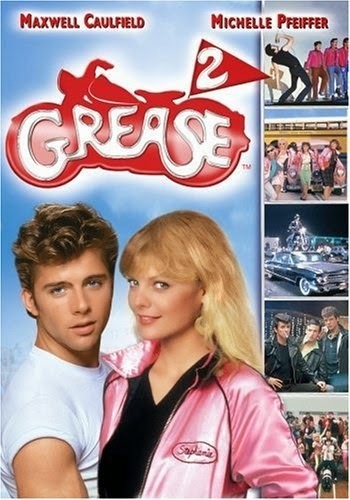
And the music...songs like Score Tonight and Reproduction were cheap imitations of the double entendres used in Greased Lightning and Look at Me I'm Sandra Dee. It was just bad, bad, bad.
And I loved it.
I'll tell you why. I was 13 or 14 years old when I saw it (on cable TV) and I thought Michelle Pfeiffer was beautiful. The songs were fun to sing along with...and I didn't really know what "bad acting" was. Or bad singing, apparently.
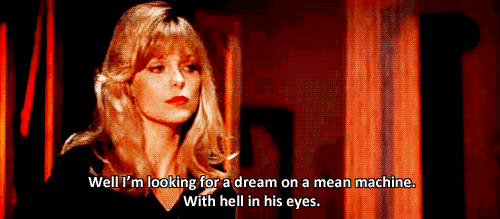
Fortunately for us, Michelle seemed to improve in her singing and has sung in other movies throughout her career. Most notably in The Fabulous Baker Boys.

Interesting factoid: Grease 2 almost destroyed Michelle Pfeiffer's career before it ever started. Brian DePalma and Al Pacino didn't want to let her audition for Scarface because she was best known for starring in Grease 2 at the time. Producer Martin Bregman insisted they give her a chance to try out and the role became her breakthrough.

Still...the movie has somehow become more enjoyable over time...in a campy sort of way. There's even a musical based on it:
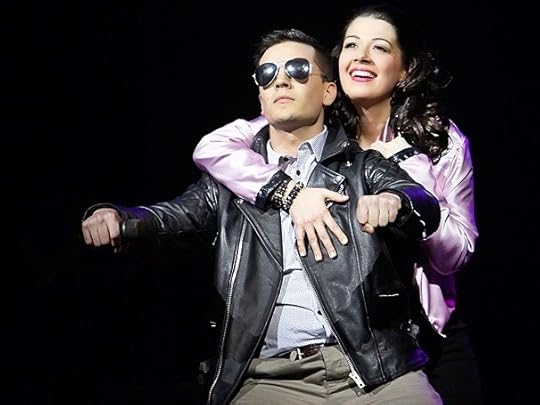
Don't take my word for it, though. Check out the campiness for yourself. (Apparently a guy riding around the parking lot of a bowling alley on a motorcycle is a really big deal.)

I wasn't old enough to be paying attention, but I can only imagine that when Grease 2 came out in 1982, there were high expectations for the film. It was, after all, the follow up to a film that is still the highest-grossing movie musical of all time.

Looking back, it seems that Grease 2 was probably a great idea when the powers-that-be were kicking story ideas around. Sandy's Australian preppy male cousin relocates to Rydell High and meets a beautiful "cool" girl named Stephanie. (I LOVED that she had my name when I was a kid!) Throw in some music and the same basic conflict that kept the couple apart in the first movie (genders reversed) and you have a hit, right?
Uh...not exactly.
The producers chose an attractive couple but it seemed nobody (and I do mean nobody) in this movie knew how to act. Maybe that was true of the first one, as well, but somehow it worked in Grease. It didn't quite work in Grease 2.

And the music...songs like Score Tonight and Reproduction were cheap imitations of the double entendres used in Greased Lightning and Look at Me I'm Sandra Dee. It was just bad, bad, bad.
And I loved it.
I'll tell you why. I was 13 or 14 years old when I saw it (on cable TV) and I thought Michelle Pfeiffer was beautiful. The songs were fun to sing along with...and I didn't really know what "bad acting" was. Or bad singing, apparently.

Fortunately for us, Michelle seemed to improve in her singing and has sung in other movies throughout her career. Most notably in The Fabulous Baker Boys.

Interesting factoid: Grease 2 almost destroyed Michelle Pfeiffer's career before it ever started. Brian DePalma and Al Pacino didn't want to let her audition for Scarface because she was best known for starring in Grease 2 at the time. Producer Martin Bregman insisted they give her a chance to try out and the role became her breakthrough.

Still...the movie has somehow become more enjoyable over time...in a campy sort of way. There's even a musical based on it:

Don't take my word for it, though. Check out the campiness for yourself. (Apparently a guy riding around the parking lot of a bowling alley on a motorcycle is a really big deal.)
Published on April 08, 2015 03:00
April 7, 2015
F is for Fitness
This month I'm participating in the A to Z Challenge. My theme is the 80s. Today's letter is:

In the 80s, America decided to get in shape. The nation was watching the disco era wind down but yoga wasn't yet popular as a form of exercise. I can only assume those former disco dancers were looking for a way to stay in shape now that they'd hung up their disco shoes in favor of raising children and starting their careers.
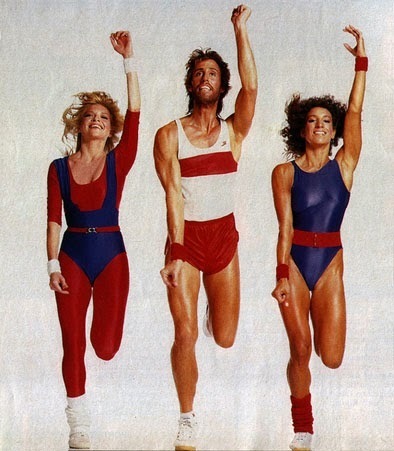
The term "aerobics" was introduced by Kenneth H. Cooper, M.D. in the late 60s. His book taught readers that activities like running, swimming, and bicycling were exercise. Apparently this was surprising information somehow.
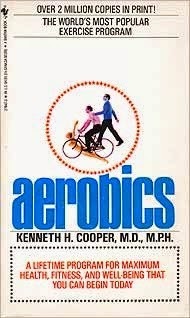
But in 1982, most of America learned about aerobics through a movie star.
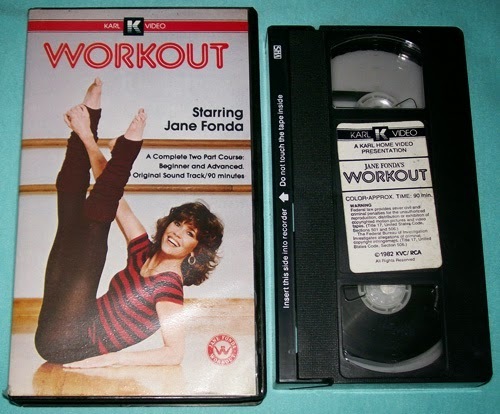
Jane Fonda released her first workout video and a trend was born. Aerobics combined fitness and dancing, making exercise fun for the first time ever. Soon everyone was hitting in the gym in colorful leotards and leg warmers.
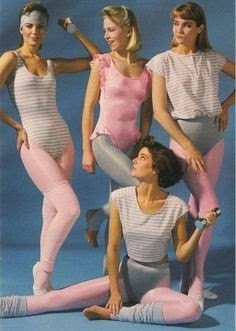
Then, of course, 70s goddess Olivia Newton-John came out with Physical, which was a #1 hit for a bazillion weeks in a row. Instead of addressing the song's obviously suggestive theme, she (VERY wisely) chose to capitalize on the fitness craze for the music video, only making the craze that much more of one. Music videos were also a HUGE thing...so it's no wonder this song was such a big success.
That brings the issue of the decorative sweatband. It was a must in the 80s, even if you weren't working out.
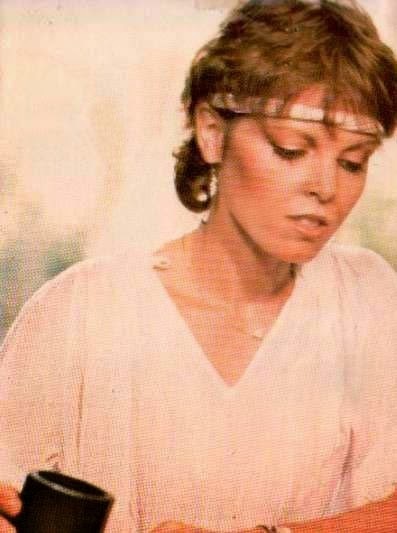
Home video was probably the biggest factor in the sudden interest in health, though. Suddenly everyone could buy a VHS tape and work out every day with their favorite celebrities. It was a trend that continued into the early 90s.
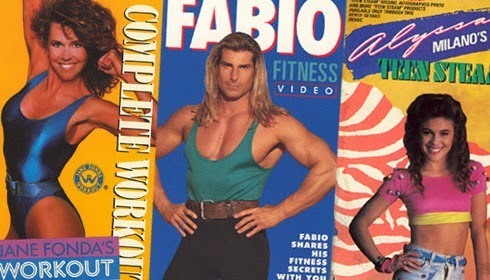
But perhaps the most memorable part of the 80s fitness craze was Richard Simmons. He's still at it today.
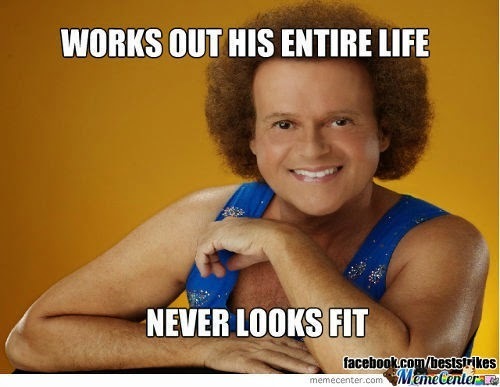
I leave you today with this viral video from the 1988 Crystal Light National Aerobic Championships--which oddly syncs fairly well to Taylor Swift's 2014 hit Shake It Off. This video says it all.

In the 80s, America decided to get in shape. The nation was watching the disco era wind down but yoga wasn't yet popular as a form of exercise. I can only assume those former disco dancers were looking for a way to stay in shape now that they'd hung up their disco shoes in favor of raising children and starting their careers.

The term "aerobics" was introduced by Kenneth H. Cooper, M.D. in the late 60s. His book taught readers that activities like running, swimming, and bicycling were exercise. Apparently this was surprising information somehow.

But in 1982, most of America learned about aerobics through a movie star.

Jane Fonda released her first workout video and a trend was born. Aerobics combined fitness and dancing, making exercise fun for the first time ever. Soon everyone was hitting in the gym in colorful leotards and leg warmers.

Then, of course, 70s goddess Olivia Newton-John came out with Physical, which was a #1 hit for a bazillion weeks in a row. Instead of addressing the song's obviously suggestive theme, she (VERY wisely) chose to capitalize on the fitness craze for the music video, only making the craze that much more of one. Music videos were also a HUGE thing...so it's no wonder this song was such a big success.
That brings the issue of the decorative sweatband. It was a must in the 80s, even if you weren't working out.

Home video was probably the biggest factor in the sudden interest in health, though. Suddenly everyone could buy a VHS tape and work out every day with their favorite celebrities. It was a trend that continued into the early 90s.

But perhaps the most memorable part of the 80s fitness craze was Richard Simmons. He's still at it today.

I leave you today with this viral video from the 1988 Crystal Light National Aerobic Championships--which oddly syncs fairly well to Taylor Swift's 2014 hit Shake It Off. This video says it all.
Published on April 07, 2015 03:00
April 6, 2015
E is for Eat My Shorts
This month I'm participating in the A to Z Challenge. My theme is the 80s. Today's letter is:

The 80s was a decade of catchphrases. One of the most enduring catchphrases was one that owes its longevity to this guy:
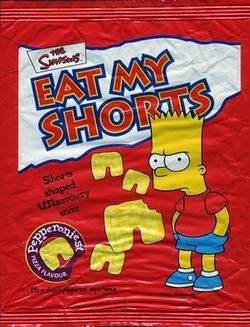
But really, as far as I can tell, the phrase originated with this guy:
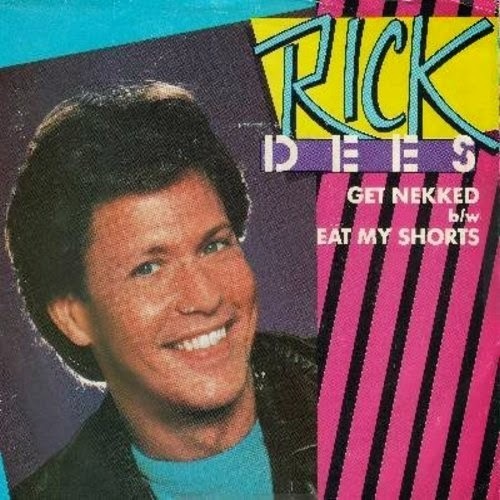
Rick Dees was a disc jockey who became nationally known in the 70s with his song Disco Duck. Yes, you read that correctly. Disco Duck was a song. It's as bad as it sounds. Here's video proof...if you dare.
His 1984 release Eat My Shorts reached #75 on the Billboard Hot 100 charts and apparently inspired a new catchphrase.
It also prompted a few local DJs to think they could become famous by becoming the poor man's "Weird Al" Yankovic. Middle Tennesseans were treated to Nashville DJ Coyote McCloud's salute to a popular Wendy's commercial, where an old lady said, "Where's the Beef?" This song played constantly on our top 40 station in 1984.
Luckily, the trend seemed to come to an abrupt halt, but not before "eat my shorts" made an appearance in one of the best 80s movies of all, The Breakfast Club.
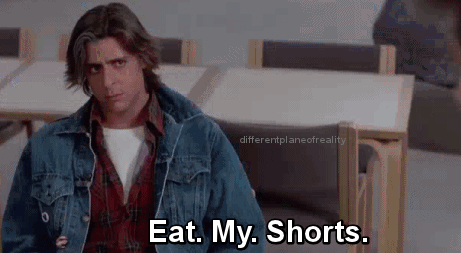
What catchphrase do you remember from your childhood?

The 80s was a decade of catchphrases. One of the most enduring catchphrases was one that owes its longevity to this guy:

But really, as far as I can tell, the phrase originated with this guy:

Rick Dees was a disc jockey who became nationally known in the 70s with his song Disco Duck. Yes, you read that correctly. Disco Duck was a song. It's as bad as it sounds. Here's video proof...if you dare.
His 1984 release Eat My Shorts reached #75 on the Billboard Hot 100 charts and apparently inspired a new catchphrase.
It also prompted a few local DJs to think they could become famous by becoming the poor man's "Weird Al" Yankovic. Middle Tennesseans were treated to Nashville DJ Coyote McCloud's salute to a popular Wendy's commercial, where an old lady said, "Where's the Beef?" This song played constantly on our top 40 station in 1984.
Luckily, the trend seemed to come to an abrupt halt, but not before "eat my shorts" made an appearance in one of the best 80s movies of all, The Breakfast Club.

What catchphrase do you remember from your childhood?
Published on April 06, 2015 03:00
April 4, 2015
D is for Duran Duran
This month I'm participating in the A to Z Challenge. My theme is the 80s. Today's letter is:

When I was in middle school, there was a band that all the girls were talking about. They were (dare I say) bigger than One Direction. Unlike One Direction, they even played their own instruments. The band?

This was the picture I knew best. I even had it on the cover of the folder I used at school every day. My crush was on the one in the middle (Simon LeBon):
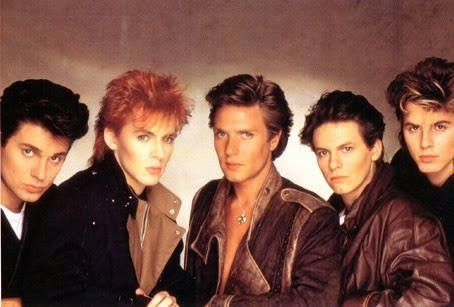
Admittedly, the band does have a VERY 80s look. Especially here.
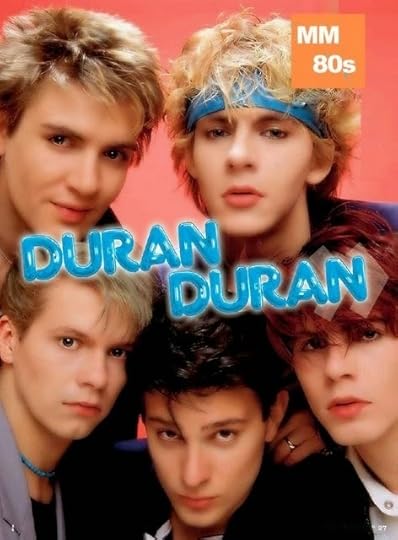
Duran Duran was among the most successful bands of the decade, ushering in what was termed, "The second British invasion." (The Beatles, of course, being the first.) They were compared to The Beatles at the time, but One Direction has been, as well. Let's just agree...there will never be another Beatles.
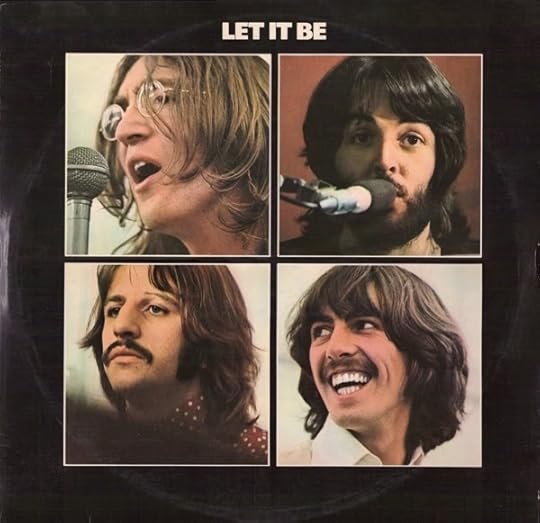
Still, Duran Duran had some major hits. Girls loved them. Guys liked their music. Then they split up and we were left with hair bands for the rest of the decade.
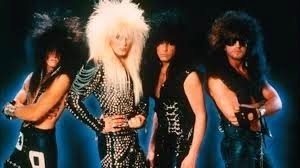
Thanks a lot, Duran Duran.
But they just signed a contract with Warner Music, so they're still going after all these years. Unfortunately, they peaked somewhere around this video:
Did you have a music crush growing up?

When I was in middle school, there was a band that all the girls were talking about. They were (dare I say) bigger than One Direction. Unlike One Direction, they even played their own instruments. The band?

This was the picture I knew best. I even had it on the cover of the folder I used at school every day. My crush was on the one in the middle (Simon LeBon):

Admittedly, the band does have a VERY 80s look. Especially here.

Duran Duran was among the most successful bands of the decade, ushering in what was termed, "The second British invasion." (The Beatles, of course, being the first.) They were compared to The Beatles at the time, but One Direction has been, as well. Let's just agree...there will never be another Beatles.

Still, Duran Duran had some major hits. Girls loved them. Guys liked their music. Then they split up and we were left with hair bands for the rest of the decade.

Thanks a lot, Duran Duran.
But they just signed a contract with Warner Music, so they're still going after all these years. Unfortunately, they peaked somewhere around this video:
Did you have a music crush growing up?
Published on April 04, 2015 03:00
April 3, 2015
C is for Cable TV
This month I'm participating in the A to Z Challenge. My theme is the 80s. Today's letter is:

Today's children (and younger adults) were born in an era of hundreds of TV channels. They don't remember a time when you had three choices to watch on TV--ABC, NBC, and CBS. We also had a local station that became Fox and, of course, PBS. If you wanted to watch TV, you had to turn a dial that looked like this:
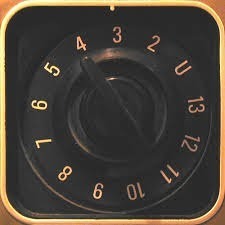
There were no remotes. If you were a child, you were the one who changed the channel.
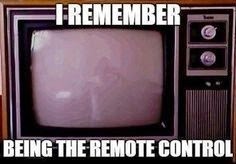
Even when cable came along, you had one TV in the house that had it. Everyone had to watch together. Your cable box had about 40 channels and looked like some variation of this:
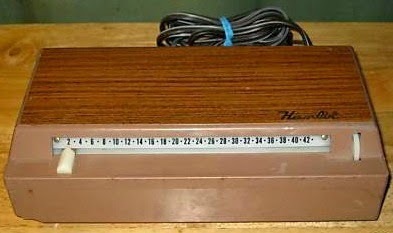
If you tried to go from Channel 2 to Channel 42 too quickly, your mom said, "Stop that. You'll strip it!"
Or maybe that was just my mom.
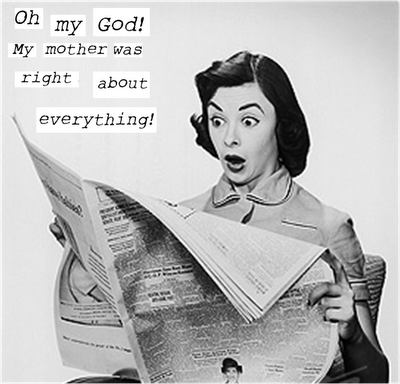
In those early days, there were four paid movie channels: HBO, Showtime, Cinemax, and The Movie Channel. At least that's what I remember? You bought HBO, you had ONE CHANNEL of HBO. I know, crazy, right? How did we ever survive?
(^Odd 1985 commercial somehow equating cable TV with being a good mom.)
But we can't talk about the introduction of cable without talking about this:
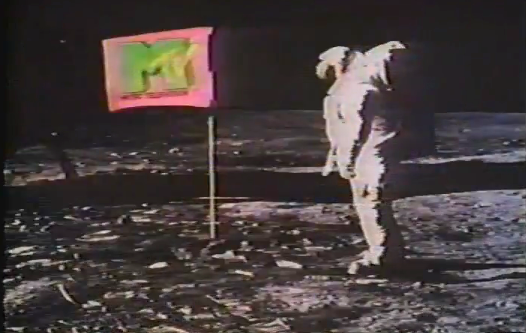
MTV changed everything. It set the tone for the 80s. It turned music from something you heard to something you saw. I'll leave you with the very first minutes MTV was ever on the air. "A new concept is born." How could we have known that someday it would be best known as the home of 16 and Pregnant?

Today's children (and younger adults) were born in an era of hundreds of TV channels. They don't remember a time when you had three choices to watch on TV--ABC, NBC, and CBS. We also had a local station that became Fox and, of course, PBS. If you wanted to watch TV, you had to turn a dial that looked like this:

There were no remotes. If you were a child, you were the one who changed the channel.

Even when cable came along, you had one TV in the house that had it. Everyone had to watch together. Your cable box had about 40 channels and looked like some variation of this:

If you tried to go from Channel 2 to Channel 42 too quickly, your mom said, "Stop that. You'll strip it!"
Or maybe that was just my mom.

In those early days, there were four paid movie channels: HBO, Showtime, Cinemax, and The Movie Channel. At least that's what I remember? You bought HBO, you had ONE CHANNEL of HBO. I know, crazy, right? How did we ever survive?
(^Odd 1985 commercial somehow equating cable TV with being a good mom.)
But we can't talk about the introduction of cable without talking about this:

MTV changed everything. It set the tone for the 80s. It turned music from something you heard to something you saw. I'll leave you with the very first minutes MTV was ever on the air. "A new concept is born." How could we have known that someday it would be best known as the home of 16 and Pregnant?
Published on April 03, 2015 03:00
April 2, 2015
B is for Boom Boxes
This month I'm participating in the A to Z Challenge. My theme is the 80s. Today's letter is:

Before the 80s, if you wanted to listen to music, you did it on your home stereo.
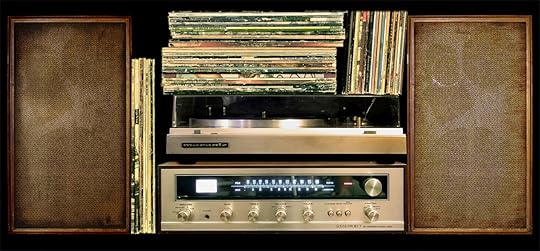
Or on the 8-track player in your car.
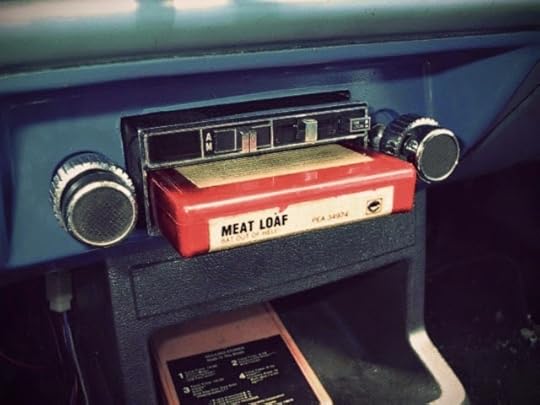
But in the 80s, something revolutionary came along. Music became portable.
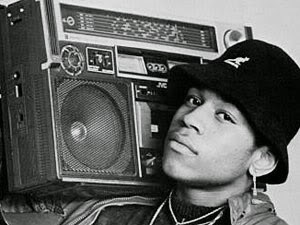
And then a little more portable...
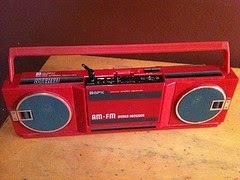
I remember listening to music on my boom box in my college dorm room. By the early 90s they'd gotten even smaller but we had no idea that soon they'd be completely obsolete. Today's version of the boom box is simply a small set of speakers that connects to your smartphone via Bluetooth.
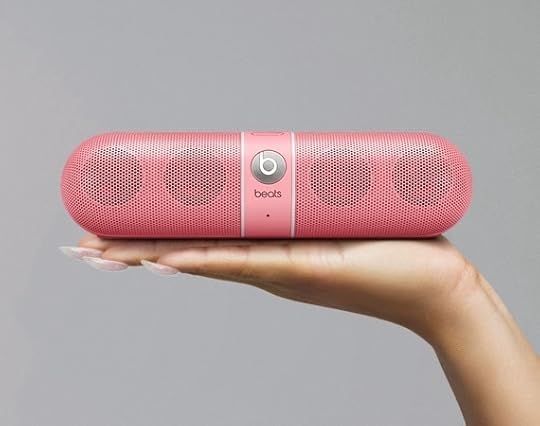
Boom boxes will live on forever, however, thanks to a certain romantic movie...
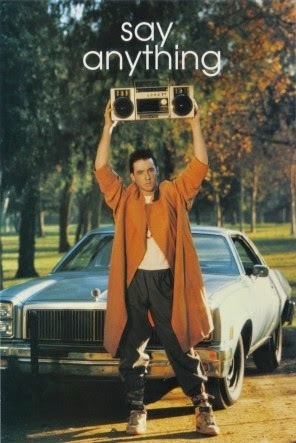
Do you ever listen to music without headphones? What do you use?

Before the 80s, if you wanted to listen to music, you did it on your home stereo.

Or on the 8-track player in your car.

But in the 80s, something revolutionary came along. Music became portable.

And then a little more portable...

I remember listening to music on my boom box in my college dorm room. By the early 90s they'd gotten even smaller but we had no idea that soon they'd be completely obsolete. Today's version of the boom box is simply a small set of speakers that connects to your smartphone via Bluetooth.

Boom boxes will live on forever, however, thanks to a certain romantic movie...

Do you ever listen to music without headphones? What do you use?
Published on April 02, 2015 03:00



